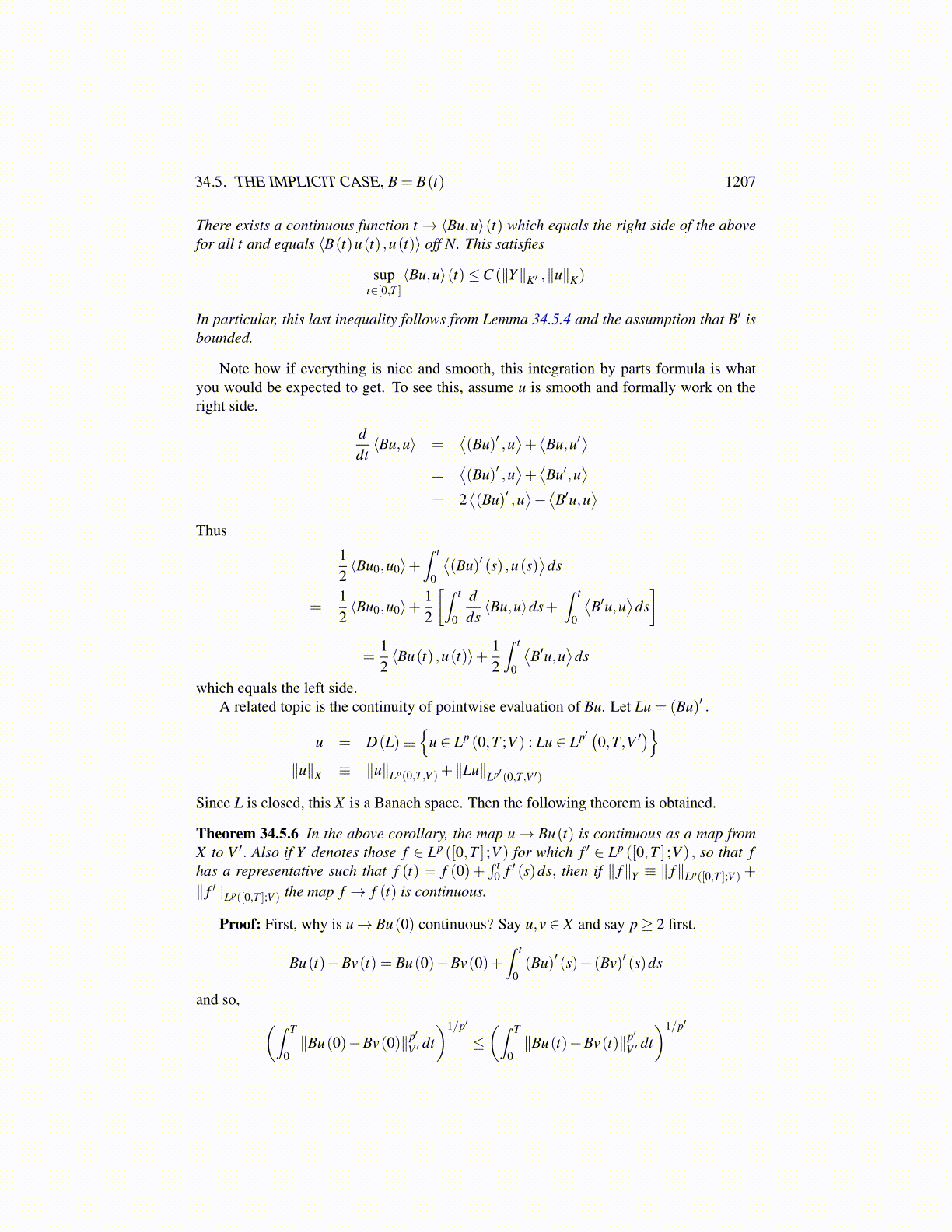
34.5. THE IMPLICIT CASE, B = B(t) 1207
There exists a continuous function t → ⟨Bu,u⟩(t) which equals the right side of the abovefor all t and equals ⟨B(t)u(t) ,u(t)⟩ off N. This satisfies
supt∈[0,T ]
⟨Bu,u⟩(t)≤C (∥Y∥K′ ,∥u∥K)
In particular, this last inequality follows from Lemma 34.5.4 and the assumption that B′ isbounded.
Note how if everything is nice and smooth, this integration by parts formula is whatyou would be expected to get. To see this, assume u is smooth and formally work on theright side.
ddt⟨Bu,u⟩ =
⟨(Bu)′ ,u
⟩+⟨Bu,u′
⟩=
⟨(Bu)′ ,u
⟩+⟨Bu′,u
⟩= 2
⟨(Bu)′ ,u
⟩−⟨B′u,u
⟩Thus
12⟨Bu0,u0⟩+
∫ t
0
⟨(Bu)′ (s) ,u(s)
⟩ds
=12⟨Bu0,u0⟩+
12
[∫ t
0
dds⟨Bu,u⟩ds+
∫ t
0
⟨B′u,u
⟩ds]
=12⟨Bu(t) ,u(t)⟩+ 1
2
∫ t
0
⟨B′u,u
⟩ds
which equals the left side.A related topic is the continuity of pointwise evaluation of Bu. Let Lu = (Bu)′ .
u = D(L)≡{
u ∈ Lp (0,T ;V ) : Lu ∈ Lp′ (0,T,V ′)}∥u∥X ≡ ∥u∥Lp(0,T,V )+∥Lu∥Lp′ (0,T,V ′)
Since L is closed, this X is a Banach space. Then the following theorem is obtained.
Theorem 34.5.6 In the above corollary, the map u→ Bu(t) is continuous as a map fromX to V ′. Also if Y denotes those f ∈ Lp ([0,T ] ;V ) for which f ′ ∈ Lp ([0,T ] ;V ) , so that fhas a representative such that f (t) = f (0)+
∫ t0 f ′ (s)ds, then if ∥ f∥Y ≡ ∥ f∥Lp([0,T ];V ) +
∥ f ′∥Lp([0,T ];V ) the map f → f (t) is continuous.
Proof: First, why is u→ Bu(0) continuous? Say u,v ∈ X and say p≥ 2 first.
Bu(t)−Bv(t) = Bu(0)−Bv(0)+∫ t
0(Bu)′ (s)− (Bv)′ (s)ds
and so, (∫ T
0∥Bu(0)−Bv(0)∥p′
V ′ dt)1/p′
≤(∫ T
0∥Bu(t)−Bv(t)∥p′
V ′ dt)1/p′